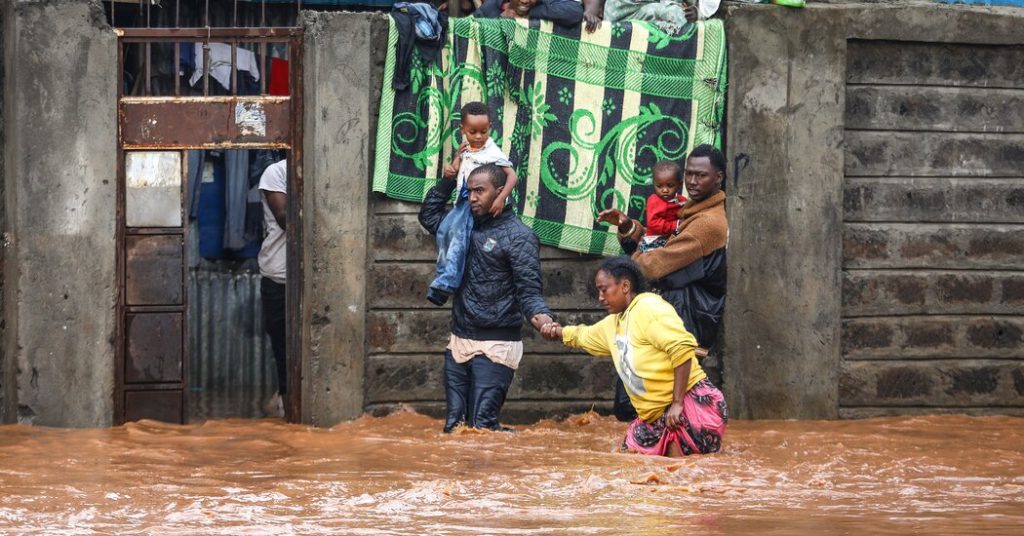Days of torrential rains in Kenya have caused widespread devastation, with at least 32 people dead, 15 injured, and over 40,000 displaced. The flooding has also resulted in the death of nearly 1,000 farm animals and destroyed thousands of acres of crops. The heaviest rain has fallen in the capital, Nairobi, where more than 30,000 people have been displaced. According to the Kenya Meteorological Department, the rain is expected to continue in the coming days, worsening the situation.
The flooding in Nairobi has reached extreme levels, with people stranded on rooftops surrounded by floodwaters. The local government is overwhelmed, and there have been calls for assistance from the federal government. The Kenya Red Cross Society has been involved in rescuing stranded individuals, including children. Government agencies have begun a joint operation to assist victims, conduct rescues, and evacuate those at risk. The situation is dire, and urgent action is needed to help those affected by the floods.
The heavy rains forced Kenya Railways to suspend commuter train services and led to the partial closures of major roads in Nairobi. The Kenya Urban Roads Authority has warned of heavy flooding along major highways in Nairobi and Mombasa. The Kenya Meteorological Department has forecasted more rain in the coming days, raising concerns of disease outbreaks such as malaria and diarrhea. The situation remains critical as the country prepares for more heavy rain.
The recent flooding in Kenya comes after months of torrential rains and floods that killed dozens of people and displaced thousands. The impact of the ongoing rains is devastating, with homes destroyed, crops ruined, and lives lost. The government is working to provide assistance to those affected, but the scale of the disaster is overwhelming. Efforts are underway to rescue stranded individuals, provide relief to the displaced, and prevent further loss of life.
The situation in Kenya highlights the vulnerability of the country to extreme weather events and the need for improved disaster preparedness and response. Climate change is exacerbating the frequency and intensity of floods in the region, leading to significant humanitarian crises. The government, along with humanitarian organizations, is working to provide relief to those affected and mitigate the impact of the flooding. The resilience of communities in the face of these challenges is being tested, and efforts are needed to build capacity to cope with future disasters.
As Kenya continues to grapple with the aftermath of the heavy rains and flooding, there is a need for increased support from both national and international partners. The humanitarian situation is dire, with thousands of people in need of assistance. The government must work to protect the most vulnerable populations, provide shelter, food, and medical care to those affected, and ensure long-term recovery and resilience-building efforts are put in place. The country is facing a major crisis, and concerted action is needed to address the immediate needs and mitigate the impact of future disasters.














